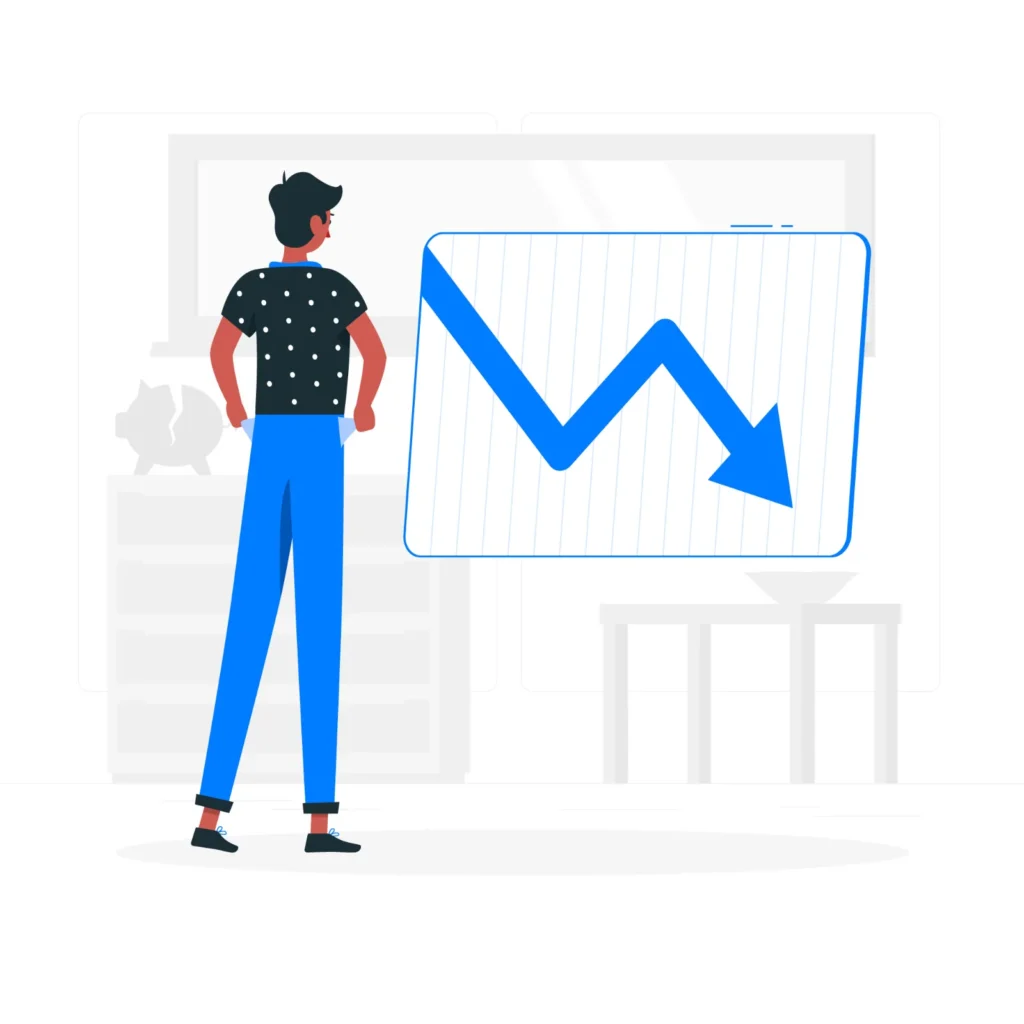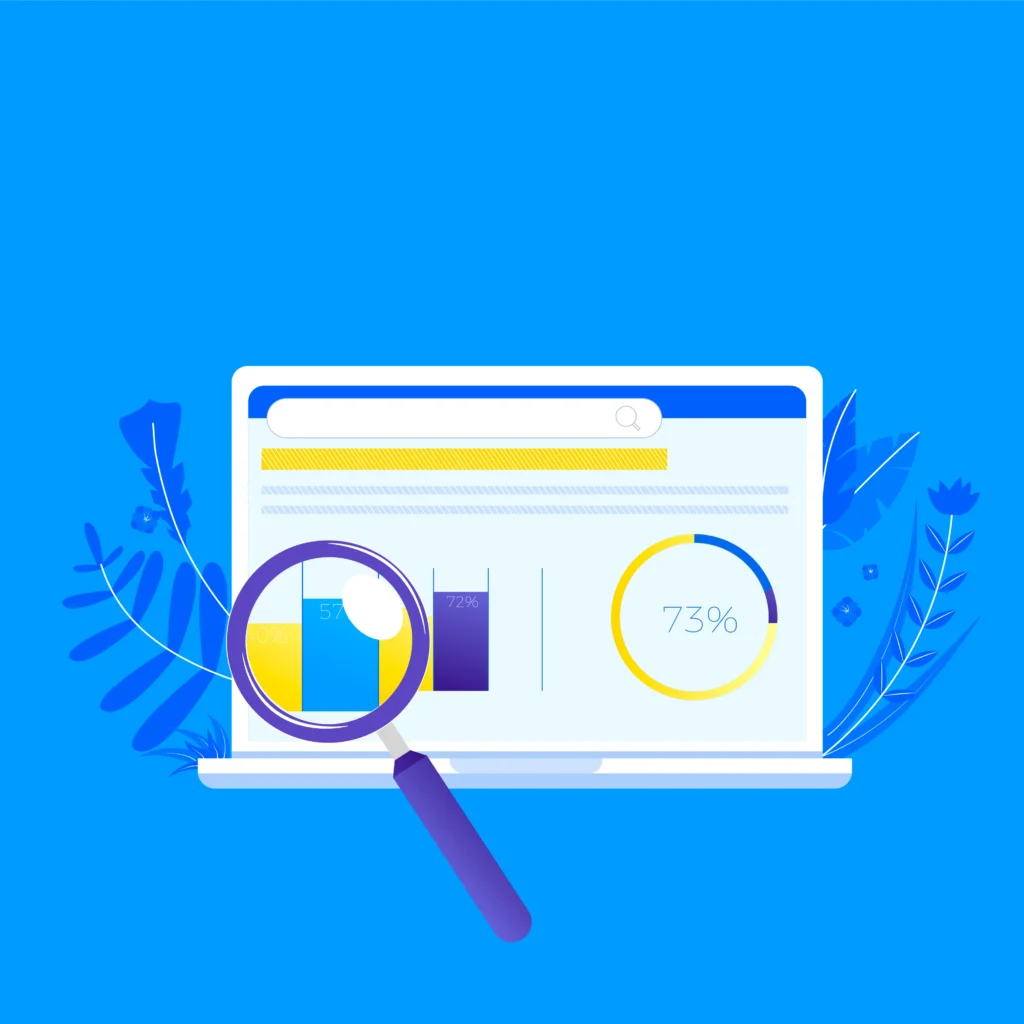Understanding the intricacies of customer engagement and conversion is paramount for business success. At the heart of this understanding lies the digital marketing funnel—a strategic framework that guides potential customers through various stages of their journey, from initial awareness to eventual advocacy. In today’s competitive market, mastering the digital marketing funnel is not just advantageous; it’s essential.
This article delves into the fundamentals of the digital marketing funnel, exploring its stages and providing actionable insights for businesses looking to harness its power. By examining each stage—awareness, consideration, conversion, retention, and advocacy—we’ll uncover key strategies, tactics, and metrics that drive effective customer engagement and foster long-term relationships.
Whether you’re a seasoned marketer seeking to refine your approach or a business owner aiming to enhance your digital presence, understanding the digital marketing funnel is your pathway to success.
What is the Digital Marketing Funnel?
The digital marketing funnel serves as a roadmap for businesses to guide potential customers through their journey, from initial interaction to conversion and beyond. At its core, the funnel comprises several stages, each representing a different phase of the customer’s decision-making process.
Stages of the Digital Marketing Funnel
Awareness
At the top of the funnel, the focus is on generating awareness among potential customers. This stage involves capturing the attention of individuals who may have a need or interest in your products or services. Strategies such as content marketing, social media advertising, and search engine optimization (SEO) play a crucial role in expanding your brand’s visibility and attracting prospects to your website.
Consideration
Once individuals are aware of your brand, they enter the consideration stage, where they evaluate their options and weigh the benefits of different solutions. Here, businesses must provide valuable content, such as informative blog posts, product demonstrations, and case studies, to educate prospects and build credibility. Additionally, implementing lead nurturing campaigns through email marketing can help keep your brand top-of-mind as prospects move closer to making a decision.
Conversion
The conversion stage marks the pivotal moment when prospects transition into paying customers. To facilitate conversions, businesses must streamline the purchasing process and remove any friction points that may deter prospects from completing a purchase. Tactics such as offering limited-time promotions, providing personalized recommendations, and optimizing the checkout experience can help incentivize conversions and drive revenue.
Retention
Beyond the initial purchase, the retention stage focuses on nurturing customer relationships and fostering loyalty. Businesses can achieve this by delivering exceptional post-purchase experiences, such as proactive customer support, personalized communication, and loyalty rewards programs. By prioritizing customer satisfaction and retention, businesses can increase customer lifetime value and drive repeat purchases.
Advocacy
In the advocacy stage, satisfied customers become brand advocates who promote your products or services to others. Leveraging customer testimonials, user-generated content, and referral programs can amplify word-of-mouth marketing and attract new customers. Cultivating a community of brand advocates can also help strengthen brand credibility and establish your business as a trusted authority in the industry.
Awareness Stage

At the top of the digital marketing funnel lies the awareness stage, where businesses strive to capture the attention of potential customers and introduce them to their brand. This stage is crucial as it lays the foundation for building brand awareness and expanding your audience reach.
Content Marketing
Content reigns supreme in the awareness stage, serving as the primary tool for attracting and engaging prospects. Businesses can create informative and engaging content such as blog posts, articles, videos, infographics, and podcasts to showcase their expertise and provide value to their target audience. By addressing common pain points, answering questions, and offering solutions, businesses can position themselves as trusted authorities in their industry and capture the interest of potential customers.
Social Media Marketing
Social media platforms offer a powerful avenue for increasing brand visibility and reaching a wider audience. Businesses can leverage social media marketing to share engaging content, interact with followers, and foster meaningful connections with prospects. By maintaining an active presence on platforms such as Facebook, Instagram, LinkedIn, and Twitter, businesses can effectively distribute their content, engage with their target audience, and drive traffic to their website.
Search Engine Optimization (SEO)
SEO plays a vital role in enhancing online visibility and driving organic traffic to your website. By optimizing your website for relevant keywords and phrases, businesses can improve their search engine rankings and attract more visitors. This involves conducting keyword research, optimizing on-page elements such as title tags and meta descriptions, creating high-quality content, and building backlinks from reputable sources. A strong SEO strategy ensures that your website appears prominently in search engine results pages (SERPs) when potential customers are searching for information related to your products or services.
Paid Advertising
In addition to organic methods, businesses can also utilize paid advertising channels to increase brand awareness and reach a targeted audience. Platforms such as Google Ads, Facebook Ads, LinkedIn Ads, and Twitter Ads allow businesses to create highly targeted campaigns that reach specific demographics, interests, and behaviors. By investing in paid advertising, businesses can amplify their message, expand their reach, and drive traffic to their website more quickly than organic methods alone.
Consideration Stage

As prospects move through the digital marketing funnel, they enter the consideration stage, where they actively evaluate different solutions to address their needs or challenges. At this stage, businesses have successfully captured the attention of potential customers and must now focus on nurturing them and guiding them towards making a purchase decision.
Educational Content
During the consideration stage, prospects are seeking more in-depth information about the products or services offered by businesses. Therefore, it’s essential to provide educational content that addresses their specific pain points, challenges, and questions. This may include whitepapers, case studies, webinars, product demonstrations, and comparison guides. By offering valuable and relevant content, businesses can position themselves as trusted advisors and provide prospects with the information they need to make informed decisions.
Email Marketing
Email marketing continues to be a powerful tool for nurturing leads and guiding them through the consideration stage. Businesses can use email campaigns to deliver personalized content tailored to the interests and preferences of individual prospects. This may include targeted newsletters, product updates, customer testimonials, and exclusive offers. By maintaining regular communication and providing valuable content via email, businesses can stay top-of-mind with prospects and gently guide them towards the next steps in the buying process.
Retargeting Campaigns
Retargeting campaigns allow businesses to re-engage prospects who have previously interacted with their website or shown interest in their products or services. By displaying targeted ads to these prospects across various online channels, such as social media platforms and display networks, businesses can remind them of their offerings and encourage them to reconsider their purchase decision. Retargeting campaigns can help reinforce brand awareness, keep prospects engaged, and ultimately drive them towards conversion.
Interactive Content
Interactive content, such as quizzes, assessments, and interactive calculators, can be highly effective in engaging prospects and guiding them through the consideration stage. By providing interactive experiences that encourage active participation, businesses can capture valuable insights about their prospects’ preferences, pain points, and needs. This data can then be used to tailor subsequent marketing efforts and provide more personalized recommendations, ultimately helping prospects make more informed decisions.
Conversion Stage

The conversion stage of the digital marketing funnel is where prospects transition into customers by taking the desired action, such as making a purchase, signing up for a service, or completing a form. At this crucial stage, businesses aim to convert leads into paying customers and drive tangible results from their marketing efforts.
Clear Call-to-Action (CTA)
To facilitate conversions, businesses must provide clear and compelling calls-to-action (CTAs) that prompt prospects to take the desired action. Whether it’s “Buy Now,” “Sign Up Today,” or “Request a Demo,” CTAs should be prominently displayed throughout the marketing materials, such as websites, landing pages, and emails. By making it easy for prospects to take the next step, businesses can increase the likelihood of conversion and streamline the path to purchase.
Optimized Landing Pages
Landing pages play a crucial role in the conversion process, as they serve as dedicated destinations where prospects can take action and complete the desired conversion goal. Businesses should ensure that their landing pages are optimized for conversions by eliminating distractions, maintaining a clear focus on the offer or product, and providing a seamless user experience. Additionally, A/B testing can help identify the most effective design elements, messaging, and CTAs to maximize conversion rates.
Offer Incentives
Offering incentives, such as discounts, free trials, or exclusive offers, can incentivize prospects to take action and convert into customers. By providing added value or limited-time promotions, businesses can create a sense of urgency and encourage prospects to make a purchase decision sooner rather than later. Additionally, leveraging social proof, such as customer testimonials or user reviews, can help build trust and credibility, further facilitating the conversion process.
Streamlined Checkout Process
For businesses operating in e-commerce or selling products online, optimizing the checkout process is essential to reducing friction and increasing conversions. Businesses should strive to create a streamlined and user-friendly checkout experience, with minimal form fields, multiple payment options, and transparent shipping and return policies. By removing obstacles and simplifying the checkout process, businesses can minimize cart abandonment and drive higher conversion rates.
Retention Stage
The retention stage of the digital marketing funnel focuses on nurturing and retaining existing customers to foster long-term relationships and drive repeat business. By engaging with customers beyond the initial purchase, businesses can maximize customer lifetime value and promote loyalty, ultimately contributing to sustainable growth and profitability.
Personalized Communication
Effective communication is key to maintaining ongoing engagement with customers. Businesses can leverage email marketing, social media, and other channels to deliver personalized messages tailored to the interests and preferences of individual customers.
By segmenting their audience based on demographic information, purchase history, and behavioral data, businesses can send targeted content and offers that resonate with each customer segment, fostering a deeper connection and driving repeat purchases.
Loyalty Programs
Loyalty programs incentivize customers to remain loyal to a brand by offering rewards, discounts, or exclusive benefits in exchange for continued patronage. By encouraging repeat purchases and rewarding customer loyalty, businesses can increase customer retention and strengthen their relationship with existing customers.
Whether it’s points-based systems, tiered rewards, or VIP perks, loyalty programs provide customers with tangible incentives to choose one brand over another, fostering a sense of belonging and appreciation.
Exceptional Customer Service
Providing exceptional customer service is crucial to building trust and loyalty among existing customers. Businesses should prioritize responsiveness, attentiveness, and empathy when addressing customer inquiries, concerns, or issues.
By promptly resolving customer issues and exceeding expectations, businesses can demonstrate their commitment to customer satisfaction and reinforce positive perceptions of their brand. Soliciting feedback from customers and actively listening to their input can help identify areas for improvement and drive continuous enhancement of the customer experience.
Continuous Engagement
To maintain ongoing engagement with customers, businesses should proactively reach out to customers through various touchpoints, such as email newsletters, social media updates, and personalized offers. By staying top-of-mind and providing value-added content, businesses can nurture relationships with existing customers and encourage them to remain actively engaged with the brand. Fostering a sense of community through user-generated content, online forums, or exclusive events can further strengthen the bond between the brand and its customers, driving advocacy and word-of-mouth referrals.
Advocacy Stage
The advocacy stage of the digital marketing funnel focuses on empowering satisfied customers to become brand advocates and ambassadors, promoting the brand to their networks and driving word-of-mouth referrals. By harnessing the power of advocacy, businesses can leverage social proof and credibility to attract new customers, enhance brand reputation, and foster a community of loyal supporters.
Encouraging User-generated Content
User-generated content (UGC) is a powerful tool for building brand advocacy and authenticity. Businesses can encourage customers to share their experiences, testimonials, and reviews on social media platforms, review websites, and other channels. By showcasing real-life stories and testimonials from satisfied customers, businesses can demonstrate the value and benefits of their products or services to potential prospects, fostering trust and credibility.
Referral Programs
Referral programs incentivize existing customers to refer their friends, family, or colleagues to the brand in exchange for rewards, discounts, or other incentives. By leveraging the networks of satisfied customers, businesses can tap into a pool of potential leads who are already predisposed to trust the recommendation of someone they know and respect. Referral programs not only drive new customer acquisitions but also strengthen existing customer relationships by rewarding advocacy and loyalty.
Cultivating Brand Ambassadors
Brand ambassadors are passionate advocates who go above and beyond in promoting and endorsing a brand’s products or services. Businesses can identify and cultivate brand ambassadors among their most loyal and engaged customers, empowering them with exclusive perks, access to insider information, and opportunities to participate in special events or campaigns. By nurturing these relationships and providing ongoing support and recognition, businesses can amplify their reach and influence through authentic and enthusiastic brand advocacy.
Engaging with Influencers
Influencer marketing involves collaborating with individuals or personalities who have a significant following and influence within a specific niche or industry. Businesses can partner with relevant influencers to create sponsored content, product reviews, or endorsements that resonate with their target audience. By leveraging the credibility and authority of influencers, businesses can amplify their brand message and reach new audiences, driving awareness, and advocacy among their followers.
Optimizing the Digital Marketing Funnel
Optimizing the digital marketing funnel is essential for maximizing conversions, improving ROI, and driving long-term business growth. By continuously refining and fine-tuning each stage of the funnel, businesses can identify areas of improvement, streamline processes, and enhance the overall effectiveness of their marketing strategies. Here are some key strategies for optimizing the digital marketing funnel:
Data-driven Insights
Utilize analytics tools and data analysis to gain valuable insights into customer behavior, preferences, and interactions at each stage of the funnel. By tracking key metrics such as conversion rates, click-through rates, and engagement levels, businesses can identify trends, patterns, and areas of opportunity for optimization.
Personalized Marketing
Implement personalized marketing strategies to deliver targeted and relevant content to prospects and customers based on their interests, preferences, and past interactions with the brand. Personalization can help enhance the customer experience, increase engagement, and drive conversions by delivering tailored messages and offers that resonate with individual needs and pain points.
Seamless User Experience
Ensure a seamless and user-friendly experience across all touchpoints of the funnel, including website navigation, landing pages, forms, and checkout processes. Optimize website speed, mobile responsiveness, and usability to minimize friction and make it easy for users to navigate through the funnel and complete desired actions.
A/B Testing and Experimentation
Conduct A/B testing and experimentation to evaluate different variations of marketing assets, messaging, and strategies to determine what resonates best with your target audience. Test elements such as headlines, call-to-action buttons, imagery, and ad copy to identify high-performing variations and refine your approach accordingly.
Marketing Automation
Leverage marketing automation tools and workflows to streamline repetitive tasks, nurture leads, and deliver timely and relevant communications throughout the customer journey. Automation can help improve efficiency, scale personalized interactions, and maintain consistency across multiple channels.
Continuous Optimization
Adopt a culture of continuous optimization and improvement by regularly monitoring performance metrics, testing new strategies, and iterating on successful tactics. By staying agile and responsive to changing market dynamics and customer needs, businesses can adapt and evolve their digital marketing efforts to drive sustainable results.
In conclusion, understanding and optimizing the digital marketing funnel is crucial for businesses seeking growth and success in today’s competitive landscape. By acknowledging the stages of awareness, consideration, conversion, retention, and advocacy, businesses can tailor their strategies to meet the needs and preferences of their target audience at each step of the journey.
Ready to take your digital marketing efforts to the next level? Contact us today to learn how our team of experts can help you develop and execute a customized digital marketing strategy tailored to your business goals and objectives. Let’s work together to elevate your brand, drive engagement, and achieve lasting success in the digital realm.



